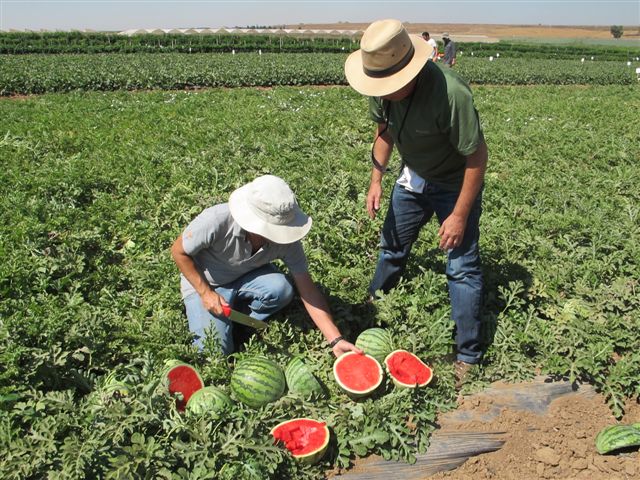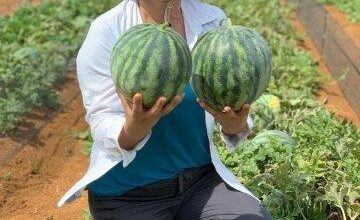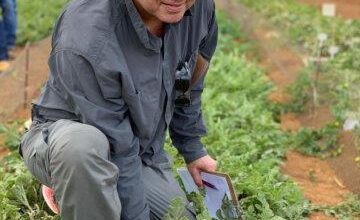.jpg)
“the watermelon market is undergoing a very dynamic trend,” says mark van der zouwen, cucurbits global product manager at hazera. “the seedless mini watermelon is gaining market share quickly, in many markets.”
we spoke with van der zouwen following the “open day” hazera hosted in nir hen, in the south of israel, to which growers were invited to see new varieties and provide their feedback. one of the new launched varieties demonstrated was ocelot, a seedless mini watermelon, around 2kg, which displays a nice tiger patterned outer layer, crispy and tasty flesh. ocelot was developed by hazera’s watermelon breeder eran yossov, who is very excited with the new generation of high quality tiger watermelons . a new, larger sized version of ocelot, called tigris, is also on its way to retailers and consumers.
“this variety was introduced this year successfully internationally, we sell the seeds to growers in usa, but also mexico and central america, who then provide fruit to the u.s. market,” explains van der zouwen. this variety is now expanding to farms in the european market.
the seedless mini watermelon market has doubled in the past decade. the reasons for this success are varied: due to the demographic trend to smaller households and more economical consumption, mini watermelons are becoming popular as they are lighter and easier to carry, they have better consistency of quality, and reduce waste (as sometimes with the larger fruits, uneaten fruit goes bad and is discarded). this trend will continue to grow and expand towards europe as well.
but don’t expect the large watermelons to disappear any time soon. even in countries where market share for mini watermelons has increased, like the u.s. and northern europe, in the summertime when people host family picnics and barbeques, the large watermelon is a popular desert choice.
cultural and national preferences come into play in different markets as well. “in italy customers traditionally prefer the large seeded watermelon ” explains van der zouwen. “we actually plan to introduce a new variety of seeded mini watermelon for particularly the italian, and perhaps greek market since in these countries local households are becoming interested in the smaller size, but still prefer seeded watermelons.”
mark van der zouwen and his colleague hazera’s regional product manager yoav levy work together to develop the new directions for watermelons. a significant boost is the rapidly growing fresh cut industry where waste plays a very important role demanding watermelons with a thin but firm rind and flesh consistency with excellent quality throughout the fruit.
hazera is a clear market leader in the field, and growing. the company’s customers are the growers, but often buyers and retailers have direct channels of communication with the company, and hazera helps to bridge the gap between grower and retailer. “we make sure to surround our customers, and supply chain contacts, with a highly skilled team of involved in breeding, product development, sales, and product management, to translate their needs into the next generation of watermelons,” concludes van der zouwen.





